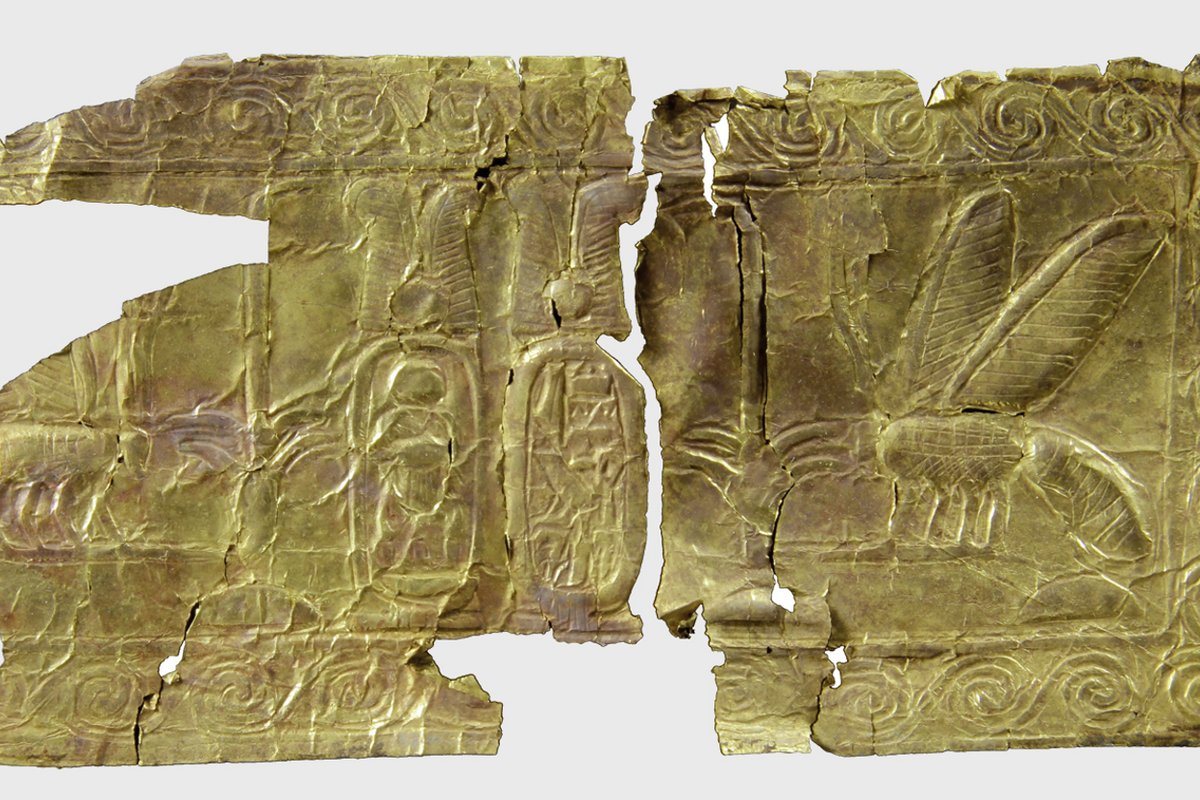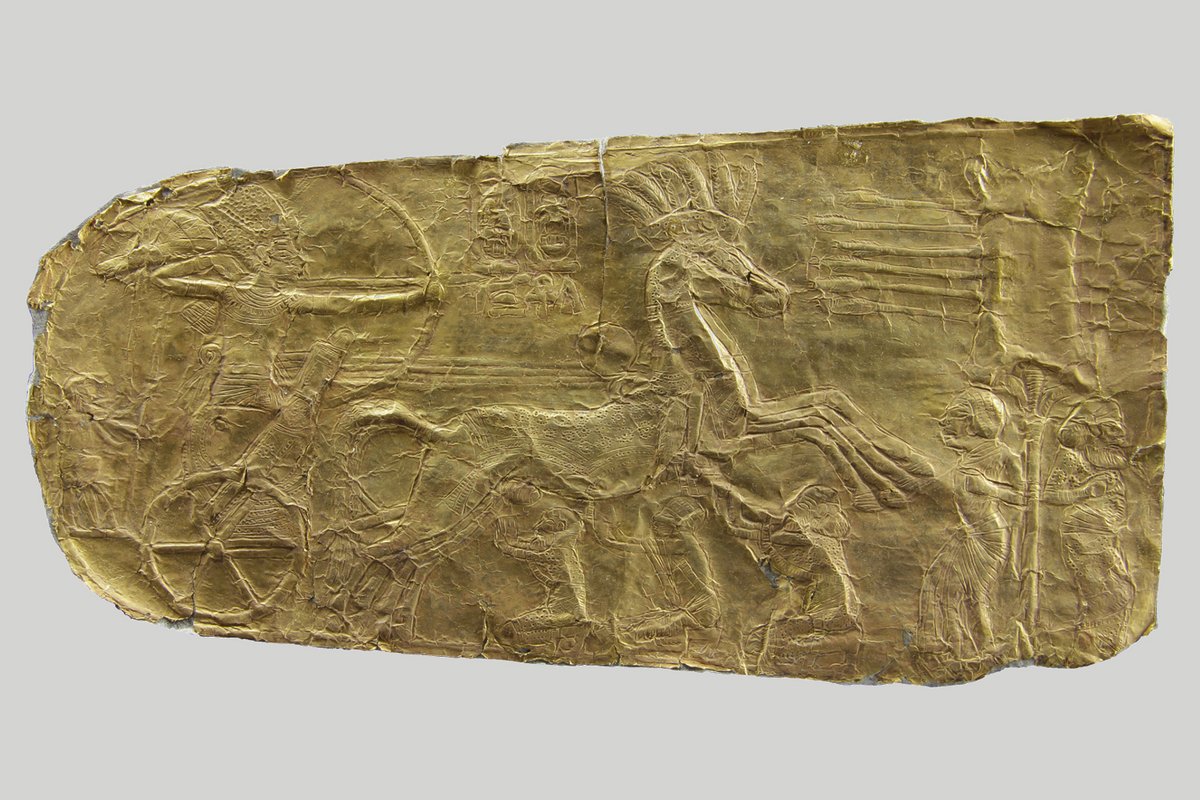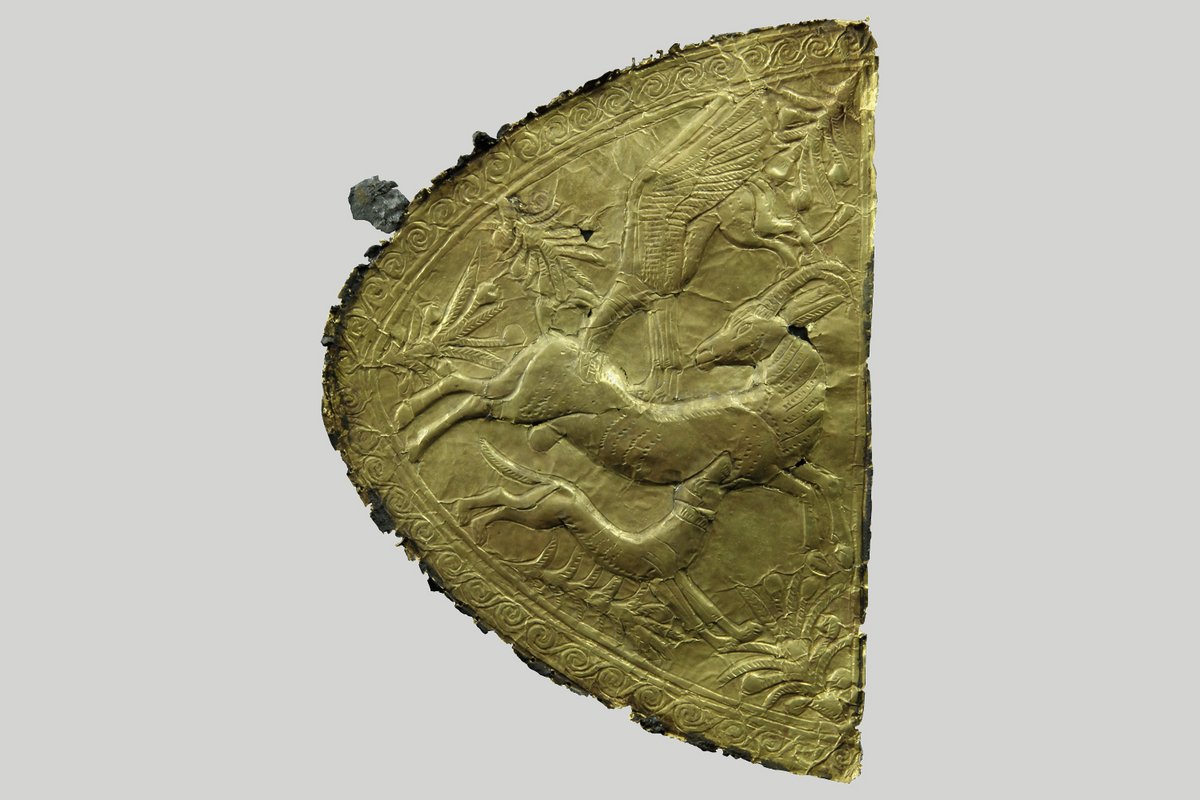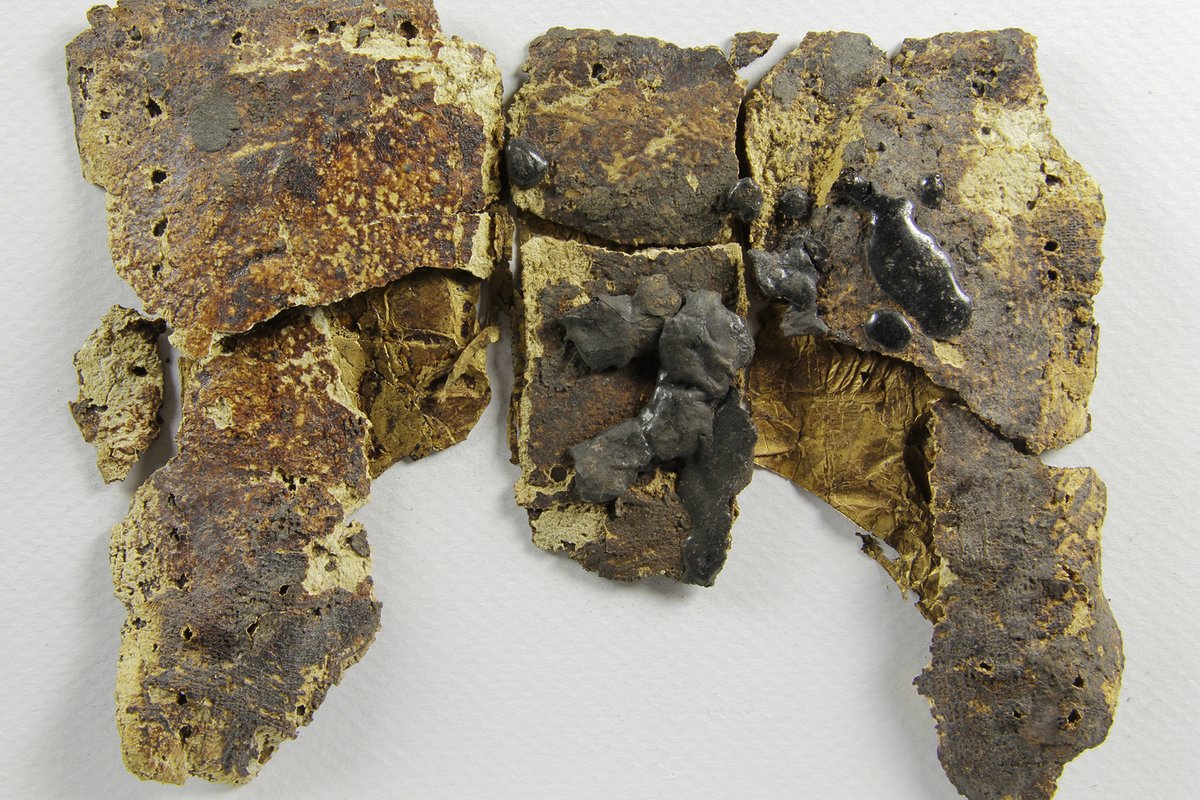The gold sheets of Tutankhamun
On cultural communication between Egypt and the Near East
One of the main concerns of the project is the restoration and conservation of the gold sheets, whose state of preservation can be described as very poor; they were stored in fragmentary condition in the stacks of the Egyptian Museum in Cairo for almost ninety years and until now have been accessible neither to museum visitors nor to archaeologists.
The overarching goal of this research project is, using a broad spectrum of scientific methods, to comprehensively study the gold sheet appliqués as an important and hitherto largely ignored group of materials for the first time and to make them accessible to the scientific community. The objects will be restored and conserved within the framework of the project, carefully documented in text, photographs and drawings, scientifically examined, evaluated in terms of art history and archaeology and published in detail.
Since only a few of these finds have survived the test of time undamaged – the vast majority show numerous cracks, warps and folds – complete restoration is an indispensable prerequisite for further work on the objects. The aim is not only to consolidate the fragile objects but also to restore the legibility of the depictions in the damaged areas.
A central object of the research project is the technological and scientific investigation. Originally, all gold sheets probably had a multi-layered carrier material made of leather and textile components – often in combination with plaster (?) – to which they were attached. Until now, however, no research has been done on the way the material was built up, the function of the individual layers and how they were connected to each other. Basically, the structural composition of the objects and the fixation of the gold foils on the carrier material need to be clarified. For this purpose, a comprehensive technological analysis of the gold sheets as well as of the objects’ organic (leather, textile, resins, putty?) and inorganic components (plaster?) is planned. The examinations also include a determination of the leather as well as the textile-technological assessment of the fabric remnants. Here, a macroscopic or microscopic autopsy will provide information.
The question of how inscriptions, ornamental decorations and figurative representations were created on the gold sheets will be investigated using a high-resolution 3D digital microscope. If they are indeed (gold) sheets – i.e. a self-supporting material – repoussage (working from the reverse side) with subsequent chasing on the front side would be the obvious combination of techniques.
Another focus of the scientific investigations will be the analysis of the gold alloy by means of a portable micro X-ray fluorescence analysis (p-XRF). The results of the investigation promise to facilitate the classification of the objects, since different gold alloys with their specific material properties were already used in a delieberate manner in ancient Egypt. The investigation of metallic trace elements (e.g. tin and platinum) could also help to determine the origin of the gold by comparing it with reference data. Furthermore, metallurgical structure analyses promise insights into the production method of the gold foil.
All examinations will also serve to form groupings within the assemblage of finds and to clarify the question of the objects’ original function. Furthermore, the findings should provide information as to whether the sheets can be assigned to one and the same workshop (for example, a Pharaonic court workshop) or whether they were produced at different locations.
- Copy link
- Print article
Team
- Prof. Dr. Falko Daim
- Dipl.-Ing. (FH) Anja Cramer
- Dipl.-Ing. (FH) Guido Heinz
- Dipl.-Ing. (FH) Sonngard Hartmann
Project Period
- 01.2014 - 12.2018
Support
Funded by the Transformation Partnership between Germany and Egypt of the Federal Foreign Office of the Federal Republic of Germany and the German Research Foundation (DFG)Monographien
- Julia Bertsch, Die Goldbleche aus dem Grab des Tutanchamun - Ikonografische Studien zum kulturellen Austausch zwischen Ägypten, Vorderasien und der Ägäis. Veröffentlichung geplant bei Online-Publikation der FU-Berlin, in Vorb.
- Julia Bertsch, Die Goldblechappliken aus dem Grab des Tutanchamun – Design, Funktion, Technologie, Band 1 (Ikonographische Studien), in Vorb.
- K. Boschat / Ch. Eckmann, Die Goldblechappliken aus dem Grab des Tutanchamun – Design, Funktion, Technologie, Band 2 (Technologische Studien). Mit Beiträgen von F. Ströbele, S. Ikram, A. Veldmeijer und N. Reifarth, in Vorb.
- J. Bertsch / K. Broschat / Ch. Eckmann, Die Goldblechappliken aus dem Grab des Tutanchamun – Design, Funktion, Technologie, Band 3 (Katalog), in Vorb.
Aufsätze
- F. Ströbele / S. Greiff / K. Broschat / Ch. Eckmann / E. Mertah, XRF-Analyses of the Gold-sheet Decoration on Tutankhamun’s Chariots, in Vorb.
- J. Bertsch / K. Broschat / Ch. Eckmann, Die Goldbleche aus dem Grab des Tutanchamun. e-Forschungsberichte des DAI 2017, Faszikel 1.
- F. Ströbele / Ch. Eckmann / K. Broschat, Analysen an Goldblechen und Goldblechfragmenten aus dem Grab des Tutanchamun (Ägypten, 18. Dynastie). In: Archäometrie und Denkmalpflege 2015. Jahrestagung an der Johannes-Gutenberg-Universität Mainz 25.-28. März 2015. Metalla: Sonderheft 7 (Bochum 2015) 183-185.
- J. Bertsch / K. Broschat / Ch. Eckmann, Die Goldbleche aus dem Grab des Tutanchamun – die Arbeiten der Jahre 2013-2014. e-Forschungsberichte des DAI 2014, urn:nbn:de:1234-1234567890.
Katalogbeiträge
- K. Broschat / J. Bertsch / Ch. Eckmann, The gold sheet appliqués from the tomb of Tutankhamun. In: S. Connor / D. Laboury (Hrsg.), Tutankhamun. Discovering the forgotten Pharaoh [Ausstellungskat. Liège] (Liège 2020) 106-109.
- K. Broschat / J. Bertsch / Ch. Eckmann, Les feuilles d’or de la tombe Toutankhamon. In: S. Connor / D. Laboury (Hrsg.), Toutankhamon, à la recherche du pharaon oublié [Ausstellungskat. Liège] (Liège 2019) 106-109.
Andere
- Ch. Eckmann / K. Broschat / J. Bertsch 2019. Tutanchamuns unbekannte Schätze: die Goldblechapplikationen. Archäologie in Ägypten: Magazin des Deutschen Archäologischen Instituts Kairo 5, 64.
- S. Seidelmayer / Ch. Eckmann / K. Broschat, Die Goldbleche des Tutanchamun – Zur kulturellen Kommunikation zwischen Ägypten und Vorderasien. Archäologie in Ägypten, Magazin des DAIK 2013, 16-21.
- Projektseite in der Projektdatenbank der DFG (GEPRIS)
- Begleitbuch zur Ausstellung
- Ausstellung



